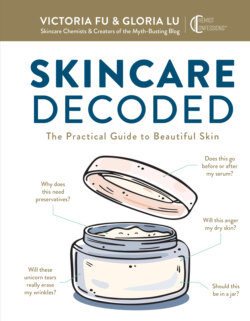Читать книгу Skincare Decoded - Victoria Fu - Страница 33
На сайте Литреса книга снята с продажи.
ОглавлениеSKINCARE DECODED • 38 CLEANSERS • 39
In Practice
W
elp! That’s a lot of different product types! Just remember, regardless of
product format, the trick of the trade is to look for a balance. The right
cleanser finds your skin’s sweet spot, balancing between effective cleansing and
gentleness. So, how does one go about perfecting their cleanser game? That’s
what we’re here for! We recommend that you first familiarize yourself with
common surfactants, then check the pH, and finally enhance the cleansing
power with support products instead of opting for a more aggressive cleanser.
Why Don’t You Love Me?
Meet SLS (sodium lauryl sulfate), one of the surfactants that any cleanser advertised as
“gentle, sulfate-free” is going to shun. Now, we just spent an entire section on finding
a gentle cleanser, so why are we talking about SLS here? One of the reasons SLS gets
blended into a lot of cleansers is because it’s cheap and cleans pretty well. It’s almost too
good at cleansing, hence, this is why it’s also used as a positive control in irritation testing.
That means that concentrated SLS is actually used to irritate the skin in a controlled
manner to test how it recovers with or without products. This is part of the reason SLS
gets a bad rep as irritating. But remember the Chemists’
Commandment #5: Concentration is key! A small amount
blended with other, more gentle surfactants can still
make an effective, but mild, cleanser. It’s what we do as
chemists—we create balanced formulas that bring together
the best characteristics of those key ingredients. So, don’t
freak out too much when you see it in the ingredient list of
a cleanser you’ve been using for the past three years.
